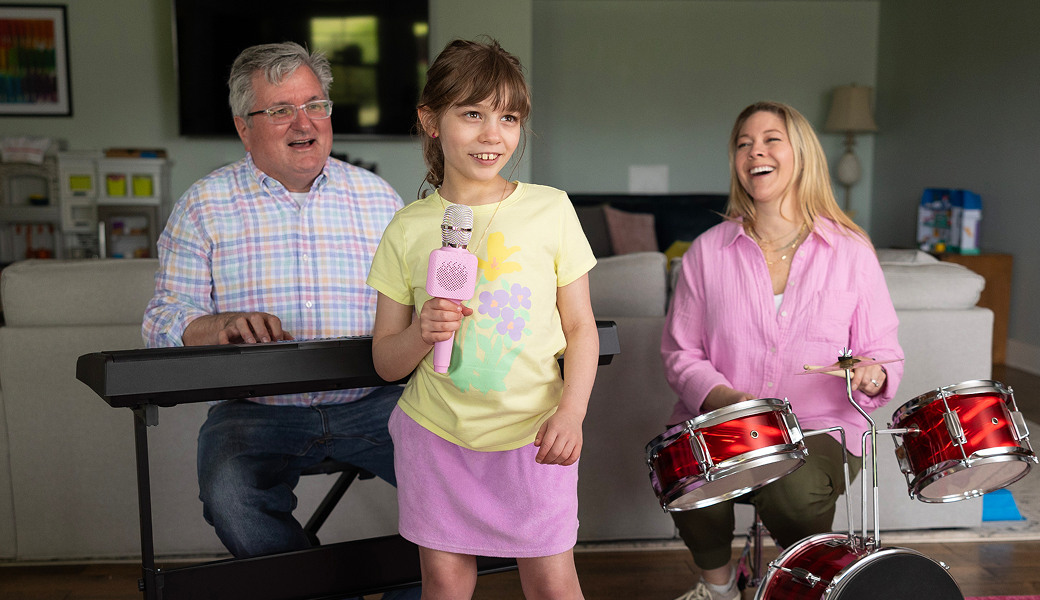
DIACOMIT Results
Seizure Reduction Backed by Results
DIACOMIT was studied in two, two-month clinical trials. Researchers measured changes in seizure frequency with treatment versus placebo. Then, DIACOMIT was studied for an additional month when some patients switched from the placebo to DIACOMIT.1,2
Two-Month Trials Results1,3
31 patients on DIACOMIT who met certain criteria:
- Diagnosed with Dravet syndrome
- Had ≥ 4 clonic or tonic-clonic seizures per month
- Between 3 and 18 years old
- Taking clobazam and valproate
Met Study Goal
≥ 50% reduction (meaningful) in seizure frequency
Exceeded Study Goal
≥ 75% reduction (profound) in seizure frequency
Achieved Seizure Freedom
100% reduction in seizure frequency
One-Month Extension Trial Results2
16 patients who switched from placebo to DIACOMIT
Met Study Goal
≥ 50% reduction (meaningful) in seizure frequency
Exceeded Study Goal
≥ 75% reduction (profound) in seizure frequency
Achieved Seizure Freedom
100% reduction in seizure frequency
Substantial Median Decreases in Seizure Frequency
Two-Month Trial Period
Patients on DIACOMIT had 84% fewer seizures compared with 5.8% for those on placebo after two months on treatment.3
Open-Label Extension Period
Patients who switched to DIACOMIT from placebo saw an 85.2% decrease in seizures compared with baseline after one month.2
An Established Safety Profile: DIACOMIT has been studied and prescribed for more than 30 years4-7
In its clinical trials, adverse events were considered mild to moderate. The common side effects in patients treated with DIACOMIT included:1
- Sleepiness
- Decreased appetite
- Agitation
- Impaired coordination
- Decreased weight
- Decreased muscle tone
- Nausea
- Tremor
- Slurred speech
- Insomnia
Most side effects with DIACOMIT are predictable and manageable. If your loved one is feeling more tired or less hungry than usual, talk to their doctor about their treatment plan. Their doctor may decide to adjust the dose of certain comedications.
These are not all the risks for use of DIACOMIT. Please see the Important Safety Information and full Prescribing Information. To report suspected adverse reactions, contact Biocodex at 866-330-3050 or the Food and Drug Administration at 800-FDA-1088 or www.fda.gov/medwatch.
References
1. DIACOMIT® [prescribing information]. Beauvais, France: Biocodex, Inc.; July 2022. 2. Guerrini R, Chancharme L, Serraz B, Chiron C. Neurol Ther. 2024;13:869-884. 3. U.S. Food and Drug Administration. CDER Clinical Review. August 2018. https://www.accessdata.fda.gov/drugsatfda_docs/nda/2018/206709Orig1s000,207223Orig1s000MedR.pdf. Accessed May 12, 2020 4. Chiron C, Marchand MC, Tran A, et al; for the STICLO study group. Stiripentol in severe myoclonic epilepsy in infancy: a randomised placebo-controlled syndrome-dedicated trial. Lancet. 2000;356(9242):1638-1642. 5. Farwell JR, Anderson GD, Kerr BM, Tor JA, Levy RH. Stiripentol in atypical absence seizures in children: an open trial. Epilepsia. 1993 Mar-Apr;34(2): 305-11. 6. Bebin M, Bleck TP. New anticonvulsant drugs. Focus on flunarizine, fosphenytoin, midazolam and stiripentol. Drugs. 1994 Aug;48(2):153-71. 7. Perez J, Chiron C, Musial C, Rey E, Blehaut H, d’Athis P, Vincent J, Dulac O. Stiripentol: Efficacy and tolerability in children with epilepsy. Epilepsia. 1999;40(11):1618-1626.